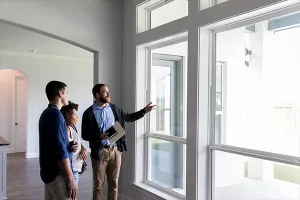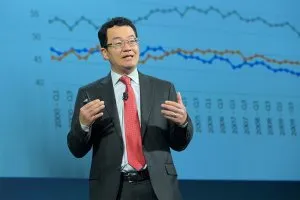
There isn’t much that Democrats and Republicans agree on these days. But one campaign promise from 2016 managed to spark broad interest on both sides of the aisle: President Donald Trump’s pledge to invest $1 trillion in American infrastructure.
At a session titled “Improving Infrastructure Leads to Increased Real Estate Investment” at the REALTORS® Legislative Meetings & Trade Expo in Washington, D.C., experts were optimistic about the chances Congress and the public would back the idea.
“In this area, we can be bipartisan,” said Brian Pallasch, managing director of government relations and infrastructure initiatives at the American Society of Civil Engineers. “You as real estate professionals need to be part of that discussion.”
Though it was promised within the first 100 days, a detailed plan has yet to be announced by the Trump administration. And several panelists noted that the federal governments’ share of the bill might end up being significantly smaller than originally promised. They indicated that the Trump administration may be planning to leverage around $200 billion in federal funds to gain the additional $800 billion in private investment to make up the total $1 trillion.
Pallasch said the traditional equation for public-private partnerships is closer to 50-50, rather than such an 80/20 proposition, and that if the government did decide to spend the full $1 trillion, it would get much closer to what’s needed to fill the hole created by decades of disinvestment.
“Over the next 10 years we actually need $2 trillion to close the gap,” he said. “We’re living on what our grandparents built. Most of our infrastructure was built for a lifespan of 50 to 60 years. And, by the way, that was 50 to 60 years ago.”
Bill Wald, CEO and chief lobbyist for the Minneapolis Area Association of REALTORS®, has seen what can happen to a community when maintenance is significantly deferred. A decade ago, the Interstate 35W bridge separating Minneapolis and St. Paul collapsed, killing 13 people and causing at least a half a billion dollars in damage and rebuilding costs.
“The bridge collapse was a shock,” Wald said, noting that when it was built in 1964, engineers created a product designed to handle 40,000 to 60,000 cars a day, less than half of the actual total when it failed. “They did not look at what the population growth of Minneapolis would be.”
But Wald has also witnessed firsthand the positive impact of active investment on a metro area. He said downtown Minneapolis has flourished thanks to investments in greenways, public transit, and new sports arenas—in particular U.S. Bank Stadium, which will host next year’s Super Bowl. “That neighborhood has seen an increase in business,” he said. “People want to live around the stadium.”
James David, manager of strategic initiatives at the Loudoun County Economic Development Office in Virginia, said his community has seen exponential population growth and steady increases in median household income over the past few decades thanks to a wide variety of infrastructural investment, from the construction of Dulles International Airport to their commitment to laying down a high-quality fiber network whenever new roads are built. Now the expansion of the Metrorail Silver Line is expected to expand on the city’s investment in high-quality information technology jobs.
“Ninety-two percent of new offices are happening in transit-oriented development areas, not those dead office campuses,” he said. “That’s where all the activity and the value is, near those transit stops.”
As new forms of transportation, like self-driving cars, become available, Pallasch noted that existing roads and bridges will need to be updated in order to take advantage of them. “Our infrastructure is not really ready for autonomous vehicles,” he said. “The road needs to be in great condition; the paint needs to be perfect” in order for the software to work properly.
David said his office keeps a real estate expert on staff, and he urged REALTORS® to get involved when there are infrastructure-building plans on the table: “When these things are happening in your communities, get out there and talk to lawmakers.”
Though she works in the commercial sector in Chicago, panel moderator Deena Zimmerman said it’s important for residential real estate professionals to advocate for investment in their communities’ infrastructure. “We all want to see economic growth,” said Zimmerman, vice president at SVN Chicago Commercial. “Where commercial thrives, residential thrives.”
Wald agreed. “We all represent people who are private property owners,” he told session attendees. “Each person who buys a home has a level of expectation that they’re going to have safety, and that [their sewers and utilities] are going to work.”








